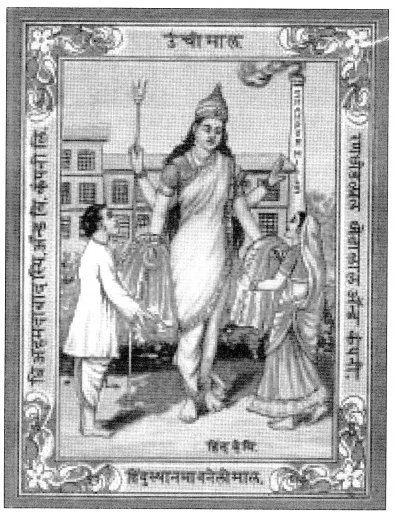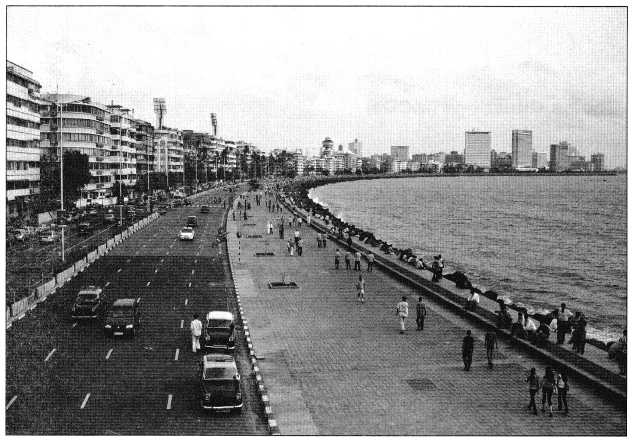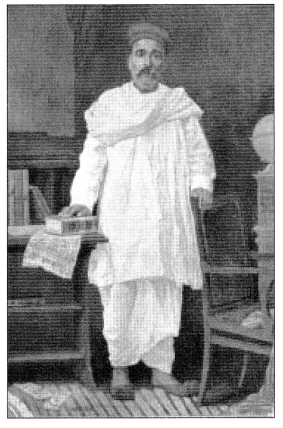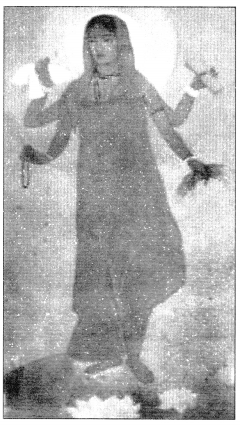Check the below NCERT MCQ Questions for Class 10 History Chapter 7 Print Culture and the Modern World with Answers Pdf free download. MCQ Questions for Class 10 Social Science with Answers were prepared based on the latest exam pattern. We have Provided Print Culture and the Modern World Class 10 History MCQs Questions with Answers to help students understand the concept very well. https://mcqquestions.guru/mcq-questions-for-class-10-history-chapter-7/
Print Culture and the Modern World Class 10 MCQs Questions with Answers
Choose the correct option:
Class 10 History Chapter 7 MCQ With Answers Question 1.
Which problem has been raised in Gulamgiri?
(a) The injustices of caste system
(b) Excessive drinking among the poor
(c) The miserable lives of upper-caste Hindu women
(d) Widow immolation
Answer
Answer: (a) The injustices of caste system
Print Culture And The Modern World MCQ Question 2.
The Bengal Gazette was edited by
(a) Gangadhar Bhattacharya
(b) Raja Rammohun Roy
(c) James Augustus Hickey
(d) Richard M. Hoe
Answer
Answer: (c) James Augustus Hickey
Print Culture And The Modern World Class 10 MCQ Question 3.
The earliest kind of print technology was developed in China, Japan and
(a) Korea
(b) France
(c) India
(d) England
Answer
Answer: (a) Korea
Print Culture And The Modern World MCQ With Answers Question 4.
Who said, “Printing is the ultimate gift of God and the greatest one.”?
(a) Charles Dickens
(b) Louise-Sebastien Mercier
(c) Mahatma Gandhi
(d) Martin Luther
Answer
Answer: (d) Martin Luther
Print Culture And Modern World MCQ Question 5.
Diomond Sultra is the oldest printed book of
(a) Korea
(b) India
(c) Japan
(d) China
Answer
Answer: (c) Japan
MCQ On Print Culture And The Modern World Question 6.
Martin Luther was a/an
(a) social reformer
(b) religious reformer
(c) environmentalist
(d) educationist
Answer
Answer: (b) religious reformer
Print Culture And The Modern World Class 10 MCQ With Answers Question 7.
Penny magazines were especially meant for
(a) children
(b) factory workers
(c) women
(d) elite class
Answer
Answer: (c) women
Class 10 History Chapter 7 Questions And Answers Question 8.
What made Governor-General Warren Hastings persecute James Hickey who edited the Bengal Gazette?
(a) He published articles supporting Indian nationalist leaders.
(b) He published advertisements related to import and sale of slaves.
(c) He published anti-religious articles.
(d) He published gossip about senior East India Company officials.
Answer
Answer: (d) He published gossip about senior East India Company officials.
Printer Option Is Available In MCQ Question 9.
The main theme of the book ‘Chhote aur Bade Ka Sawal’ written by Kashibaba, a Kanpur mill worker, was:
(a) The life of the elite upper castes.
(b) The link between caste and class exploitation.
(c) Restrictions on the Vernacular Press.
(d) Injustices of the caste system.
Answer
Answer: (b) The link between caste and class exploitation.
Class 7 History Chapter 10 MCQ Questions Question 10.
Why was the Vernacular Press Act passed by the British Government in India?
(a) The Vernacular Act was passed to promote vernacular languages.
(b) The Vernacular Act was passed by the British government to put some check on vernacular newspapers which had become assertively nationalist.
(c) The Vernacular Act was passed to please the Indians who wanted to promote Indian languages.
(d) The Vernacular Act was passed to consolidate British rule in India.
Answer
Answer: (b) The Vernacular Act was passed by the British government to put some check on vernacular newspapers which had become assertively nationalist.
Question 11.
What do you mean by the term ‘Galley’?
(a) A metal frame in which types are laid and the text composed
(b) A corridor
(c) A scarecrow
(d) None of these
Answer
Answer: (a) A metal frame in which types are laid and the text composed
Explanation:
Galley is the metal frame in which types are laid and the text composed.
Question 12.
Who was the first to use wood-block printing?
(a) Indian
(b) French
(c) Spaniards
(d) None of these
Answer
Answer: (c) Spaniards
Explanation:
The first to use wood-block printing were the Spaniards. By the early fifteenth century, woodblocks were being widely used in Europe to print textiles, playing cards, and religious pictures with simple, brief texts.
Question 13.
Who was Kitagawa Utamaro?
(a) A Japanese artist
(b) An Indian artist
(c) An Korean artist
(d) None of these
Answer
Answer: (a) A Japanese artist
Explanation:
Kitagawa Utamaro was a Japanese artist born in Edo in 1753, famous for his contribution to an art form called ‘Ukiyo’ which influenced European artists like Manet, Monet and Van Gogh.
Question 14.
What do you mean by the term ‘Calligraph’?
(a) The art of beautiful printing
(b) The art of beautiful hand printing
(c) The art of beautiful and stylised writing
(d) None of these
Answer
Answer: (c) The art of beautiful and stylised writing
Explanation:
The term Calligraph means the art of beautiful and stylised writing. Superbly skilled craftsmen could duplicate, with remarkable accuracy, as the beauty of calligraphy.
Question 15.
Who was known for an art form called ukiyo?
(a) Chinz ho
(b) Kitagawa Utamaro
(c) Gutenberg
(d) None of these
Answer
Answer: (b) Kitagawa Utamaro
Explanation:
Kitagawa Utamaro, born in Edo in 1753, was widely known for his contributions to an art form called ukiyo ‘pictures of the floating world’
Question 16.
What was the first book printed by Gutenberg?
(a) Bible
(b) Ramayana
(c) Chapbook
(d) None of these
Answer
Answer: (a) Bible
Explanation:
The first printing press in Europe is invented by Johann Gutenberg in 1448. The first book he printed was the Bible. About 180 copies were printed at that time.
Question 17.
What was the ancient name of Tokyo?
(a) Edo
(b) Osaka
(c) Gifu
(d) None of these
Answer
Answer: (a) Edo
Explanation:
Edo was the ancient name of Tokyo. In the late eighteenth century, the flourishing urban circles at Edo (later to be known as Tokyo), and illustrated collections of paintings.
Question 18.
What was the ‘Bengal Gazette’?
(a) First English magazine
(b) English Hindi mixed magazine
(c) A weekly Hindi magazine
(d) A weekly English magazine
Answer
Answer: (d) A weekly English magazine
Explanation:
Bengal Gazette was a weekly English magazine edited by James Hickey from 1780, described as a commercial paper open to all, and influenced by none.
Question 19.
Which is not an innovation of the 20th century?
(a) Cheap paperback editions
(b) The dust cover
(c) Important novels were serialised
(d) None of these
Answer
Answer: (c) Important novels were serialised
Explanation:
Printers and publishers developed new strategies to sell their products. Important novels were serialised, which led to a new way of writing novels. It is not an innovation of the20th century.
Question 20.
What was Protestant Reformation?
(a) A challenge to the authority of Rome
(b) Movement to reform the Catholic Church
(c) A new religion
(d) None of these
Answer
Answer: (b) Movement to reform the Catholic Church
Explanation:
Protestant Reformation was a 16th century movement to reform the Catholic Church dominated by Rome. Martin Luther was one of the main Protestant reformers. Several traditions of anti-Catholic Christianity developed out of the movement.
Question 21.
Who spoke these words “Printing is the ultimate gift of God and the greatest one.”?
(a) Johann Gutenberg
(b) Jawahar lal Nehru
(c) martin Luther
(d) None of these
Answer
Answer: (c) martin Luther
Explanation:
Deeply grateful to print, Luther said, ‘Printing is the ultimate gift of God and the greatest one.’ Several scholars, in fact, think that print brought about a new intellectual atmosphere and helped spread the new ideas that led to the Reformation.
Question 22.
The book, ‘Chote Aur Bade Ka Sawal’ talked about which social reforms?
(a) The link between caste and class exploitation
(b) The injustices of the caste system
(c) Restrictions on the vernacular press
(d) Ill treatment of widows
Answer
Answer: (a) The link between caste and class exploitation
Explanation:
Kashibaba, a Kanpur millworker, wrote and published Chhote Aur Bade Ka Sawal in 1938 to show the links between caste and class exploitation.
Question 23.
Which book was carried by petty pedlars and sold for a penny?
(a) Novels
(b) Magazines
(c) Chapbook
(d) None of these
Answer
Answer: (c) Chapbook
Explanation:
In England, penny chapbooks were carried by petty pedlars known as chapmen, and sold for a penny, so that even the poor could buy them.
Question 24.
When was the Paperback editions of books were introduced?
(a) The onset of the Great Depression
(b) The First World War
(c) The Second World War
(d) None of these
Answer
Answer: (a) The onset of the Great Depression
Explanation:
The Paperback editions of books were introduced during the onset of the Great depression. To sustain buying, all brought out cheap paperback editions.
Question 25.
Who introduced the first printing press in India?
(a) East India company
(b) Arabic traders
(c) Portuguese missionaries
(d) None of these
Answer
Answer: (c) Portuguese missionaries
Explanation:
The printing press was first introduced in India by Portuguese missionaries.
Picture Based Questions
Question 1.
Study the picture (NCERT TB page 157). Identify the personality and answer the questions that follow:
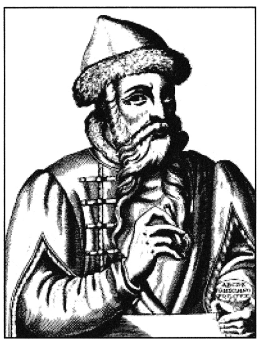
(i) Who is he? Which country did he belong to?
(ii) What did he invent? When?
(iii) Name the first book that he printed.
Answer
Answer:
(i) He is Johann Gutenberg. He belonged to Germany.
(ii) He invented printing press in 1430’s.
(iii) The Bible.
Source Based Questions
Question 1.
Read the extract (Source E) taken from Textbook page 172 and then answer the questions that follow:
In 1926, Begum Rokeya Sakhawat Hossein, a noted educationist and literary figure, strongly condemned men for withholding education from women in the name of religion as she addressed the Bengal Women’s Education Conference:
‘The opponents of female education say that women will become unruly… Fie! They call themselves Muslims and yet go against the basic tenet of Islam which gives Women an equal right to education. If men are not led astray once educated, why should women?’
(i) Who was Begum Rokeya Hossein?
(ii) Why did she condemn men?
(iii) What was her opinion about women’s education?
Answer
Answer:
(i) Begum Rokeya Hossein was a noted educationist and literary figure.
(ii) She condemned men for withholding education from women in the name of religion.
(iii) She opined that women must be given education. They must be given an equal right to education.
We hope the given NCERT MCQ Questions for Class 10 History Chapter 7 Print Culture and the Modern World with Answers Pdf free download will help you. If you have any queries regarding Print Culture and the Modern World CBSE Class 10 History MCQs Multiple Choice Questions with Answers, drop a comment below and we will get back to you soon.
